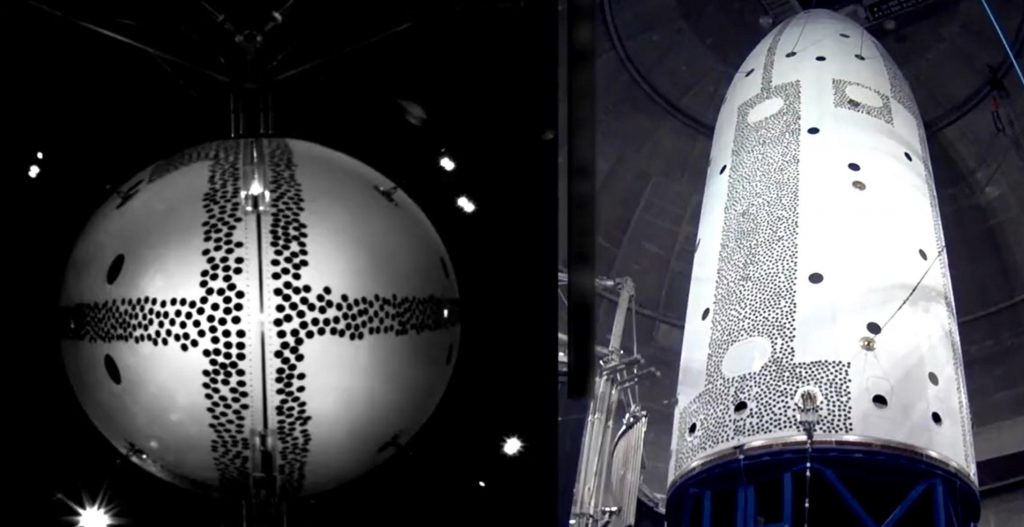4.02.2022

Blue Origin has completed a crucial test of the payload fairing of their upcoming New Glenn rocket at NASA’s Armstrong Test Facility in Ohio.
The fairing – also known as a nose cone – encapsulates payloads and insulates them from the local environment and the stress of ascent. During ascent, it must protect the payload from aerodynamic buffeting and heating as the rocket works to escape Earth’s atmosphere. The purpose of Blue Origin’s test was to ensure that the fairing’s halves properly separate and jettison, exposing the payload to the vacuum of space and preparing it for deployment minutes or hours later. Equally important is ensuring that those fairing halves are pushed far enough away from the rocket to avoid recontact, which could easily cause catastrophic damage.

New Glenn is set to be Blue Origin’s first orbital launch vehicle and is designed to launch at up to 45 metric tons (~100,000 lb) to low Earth orbit (LEO) and almost 14 tons (~30,000 lb) to geostationary transfer orbit (GTO) – very similar to the performance offered by a SpaceX Falcon Heavy with full recovery of all three boosters. Set to stand approximately 96 meters (313 ft) tall, New Glenn improves upon the multi-core complexity of Falcon Heavy with a simpler single-core design. Similar to SpaceX’s single-core Falcon 9, New Glenn features a fully reusable first stage pair, an expendable upper stage, and the world’s largest composite payload fairing (likely also expendable). New Glenn will launch from Cape Canaveral Space Force Station (CCSFS) Launch Complex 36 (LC-36) – barely a mile south of the land-based Landing Zones some Falcon boosters land at.
This test took place at NASA Glenn Research Center’s Armstrong Test Facility Space Environments Complex. The complex is home to the world’s largest vacuum chamber. “This is the only place in the world that we can test out this fairing in an environment similar to what the rocket will be seeing in space,” stated Shawna Sherwood Ryan, Project Manager and Test Coordinator for Blue Origin.SpaceX used the same facility to test the deployment performance of its first 5.2-meter-wide (~17 ft) Falcon fairing prototype in the early 2010s.
In a video released by Blue Origin on Monday, February 1st, what amounts to the first integrated New Glenn hardware test of any kind proved successful. “This is a very exciting day,” said Park Cover, Sr. Director of New Glenn Stage 2 & Payload Accommodations. Blue Origin is likely still years away from New Glenn’s first orbital launch attempt but this test provides some confidence that the company is finally entering the integrated testing phase of launch vehicle development.
The fairing is perhaps the simplest large assembly of any orbital launch vehicle and Blue Origin has yet to reveal any evidence of work on integrated booster or upper stage test hardware, but successfully completing the most important part of fairing qualification nonetheless raises the odds that New Glenn’s first launch could happen sometime next year. As of February 2021, the company claimed that New Glenn’s launch debut could happen as early as “late 2022.”
Quelle: TESLARATI
